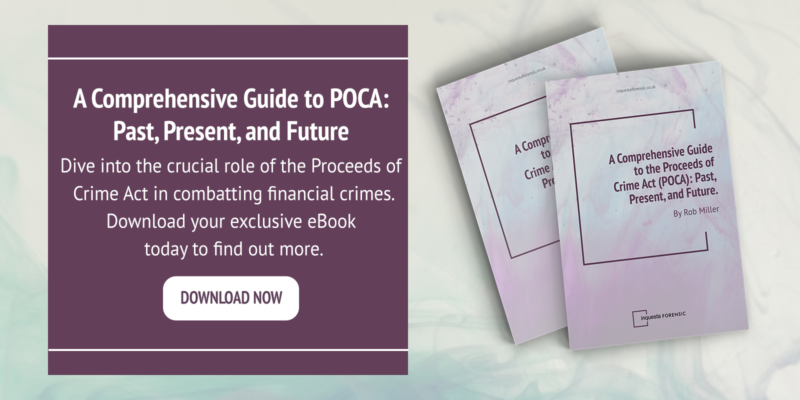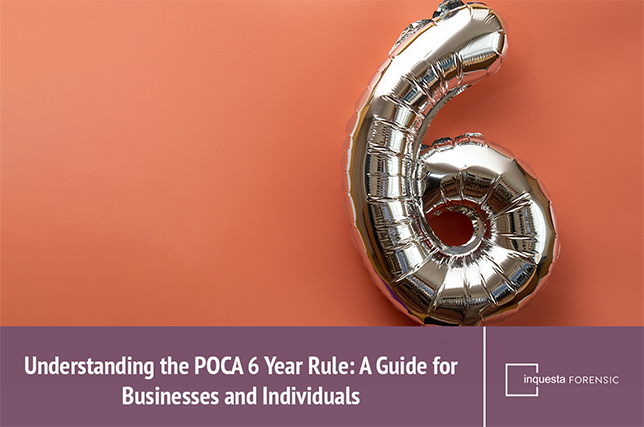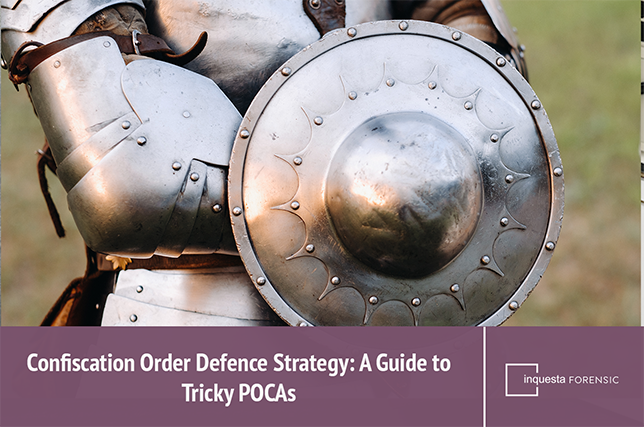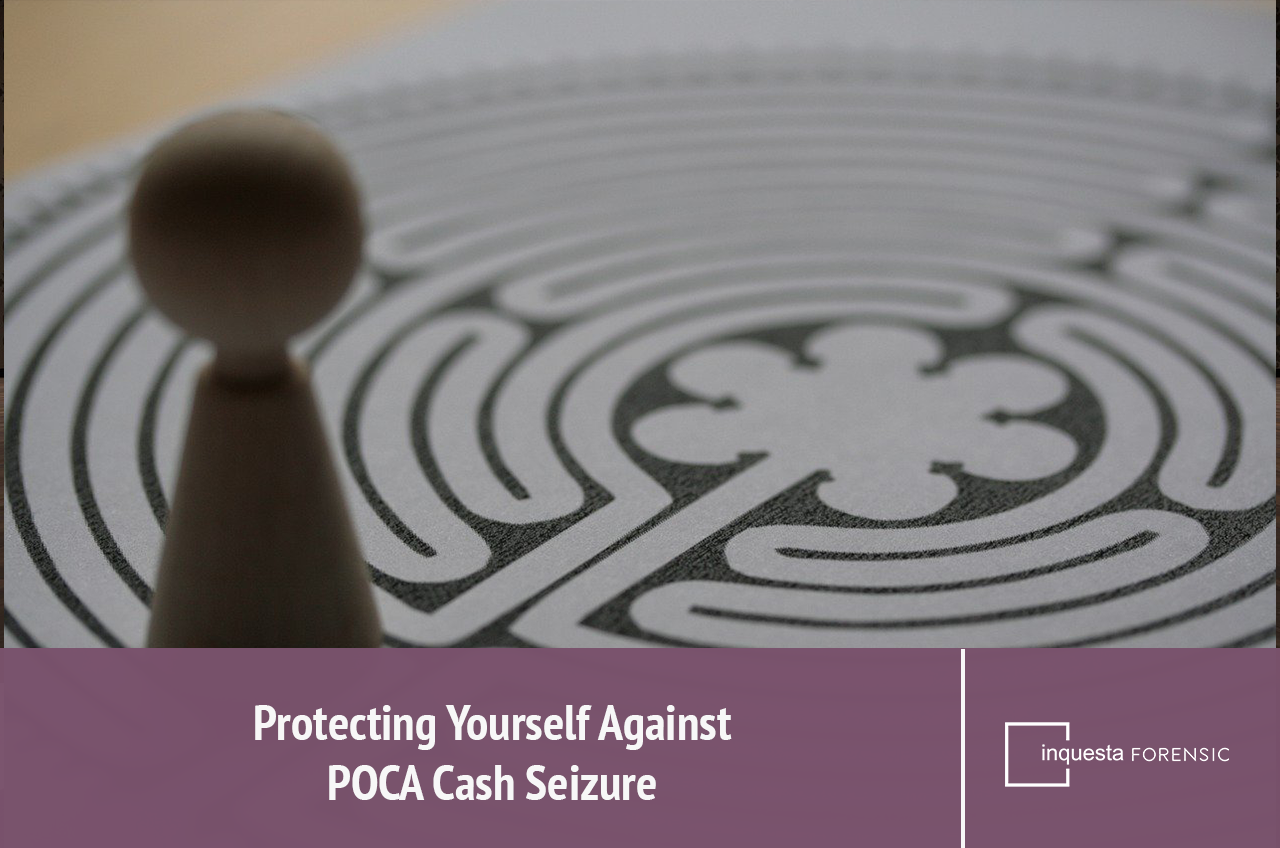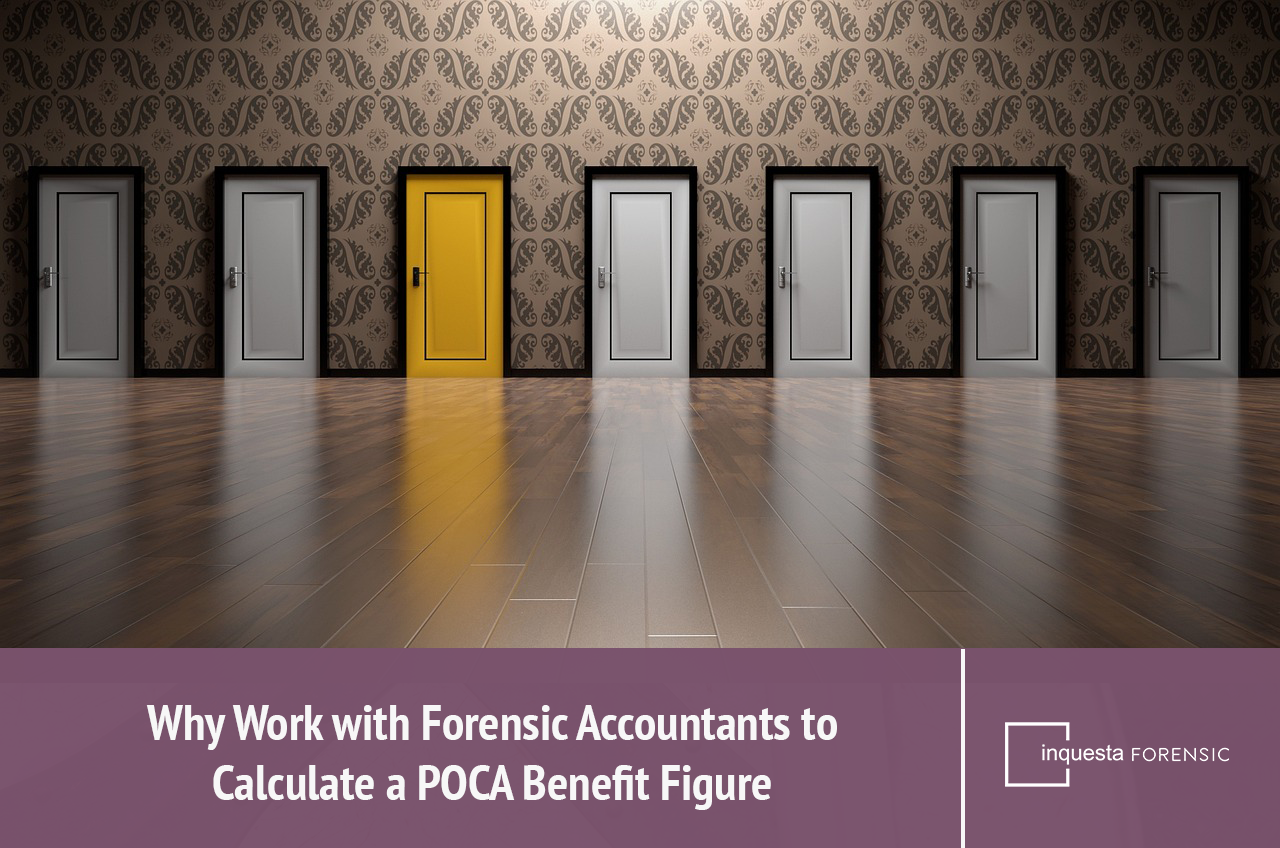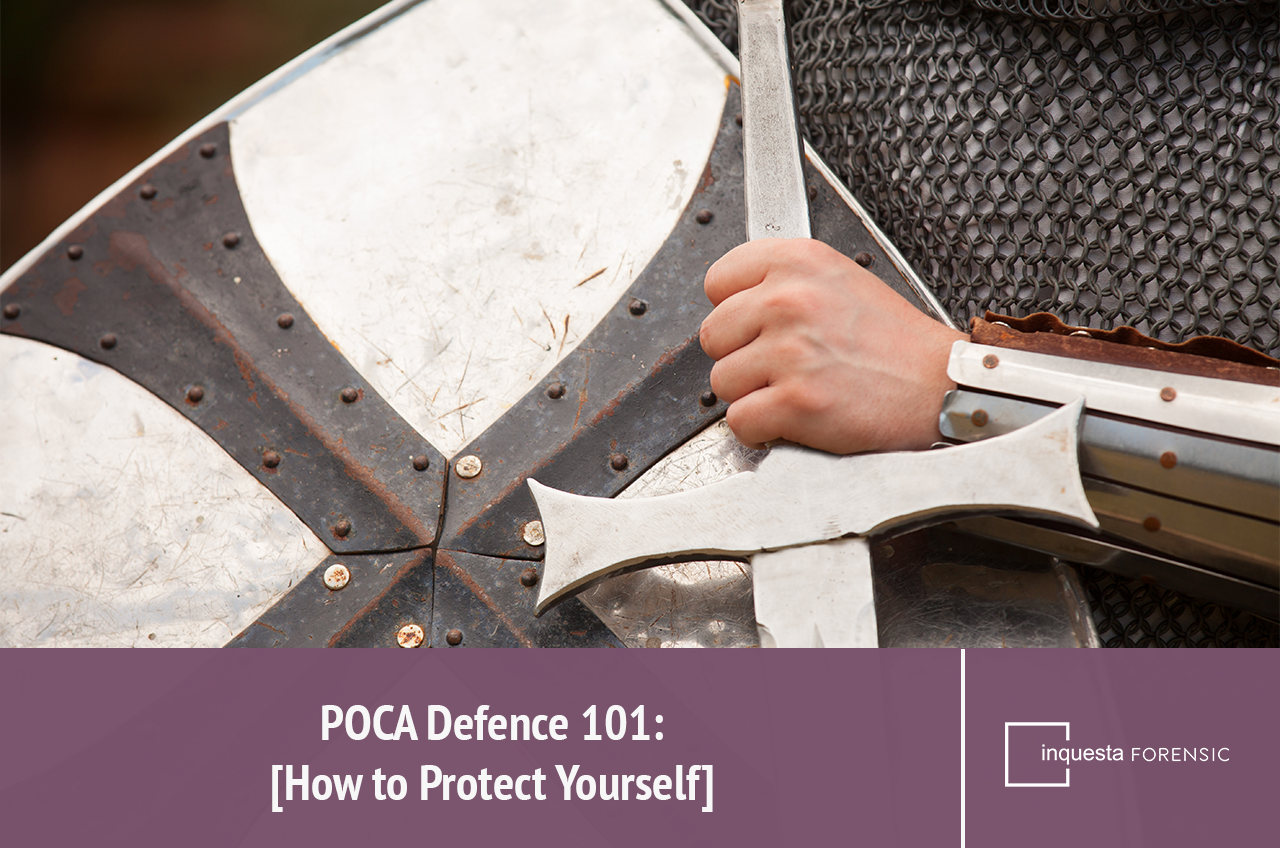Have you ever wondered how authorities track down and identify hidden assets in the POCA process? These assets, obtained via criminal activities and hidden, in some cases, all over the globe, must be located if we’re to show any current or would-be criminals that crime doesn’t pay. Fortunately, modern day techniques and skills make the process less of a guessing game and more detective work.
Delve into the intricate world of financial forensics and learn how experts in the United Kingdom unravel the mysteries and explore the labyrinths of concealed wealth and financial crime.
You’ll discover the secrets behind unearthing assets that criminals thought were beyond reach. Learn more about how these measures can not only serve justice today, but deter crime tomorrow. When it comes to POCA, out of sight out of mind does not apply. Find out more today!
For a comprehensive understanding of the Proceeds of Crime Act, you can also read our blog: The Proceeds of Crime Act Explained.
What are the Proceeds of Crime?
The proceeds of crime refer to any money or assets gained by a criminal during the course of their criminal activities. The authorities have the power to attempt to confiscate any of these assets that are believed to have been unlawfully gained.
Removing the profits gained from crime will help to disrupt the cycle of ill-gotten money and may even prevent further offences. If criminals can be taught that crime doesn’t pay, they may be discouraged from going down that road in the future.
What are Hidden Assets in POCA Proceedings?
The issue of hidden assets in POCA proceedings usually occurs when assets suspected to have been obtained illegally, cannot be accounted for. In cases like this, the defendant must cover these hidden assets. This is also true if the court suspects that the defendant is living a lifestyle that is only possible with the use of hidden assets.
Hidden assets in POCA proceedings are often kept intentionally concealed or are not fully disclosed. This is generally done to avoid detection and evential confiscation. Identification and recovery of these assets is a fundamental aspect of the Proceeds of Crime Act process.
These assets can take various forms, and are often kept intentionally concealed or not fully disclosed. This is generally done to avoid detection and eventual confiscation. Identification and recovery of the following examples of hidden assets is a core part of the standard POCA procedure.
- Undisclosed Bank Accounts: A person may have undisclosed bank accounts in their name, or held under the names of family members/associates. These accounts can hold large amounts of money, so it can be essential that they are found.
- Offshore Accounts: It is not uncommon for individuals to transfer their ill-gotten gains to an offshore account in a tax haven or area with strong financial secrecy laws. This makes it as difficult as possible for authorities to trace and seize assets.
- Real Estate: Real estate properties purchased with illicit funds will qualify as hidden assets. Any such property, regardless of if it is under the names of a third party or shell company must be identified.
- Business Interests: Hidden assets can also be found within a person’s investments. This can include full or partial stakes in companies that generate a legitimate income.
- High Value Assets: Criminals will often look to invest in luxury items such as expensive cars, jewellery, or art. As well as the perceived status benefits these items can bring, such luxury assets can often be difficult to trace.
- Cryptocurrencies: Individuals may utilise the anonymity that comes with cryptocurrencies in order to hide their assets. This emerging field will often require expert assistance to trace assets.
- Trusts: Some criminals will look to create trusts to hold their assets. This is complex, as it makes it more difficult to determine the true ownership of the assets held within the trust. In some cases, these trusts may involve the transfer of ‘tainted gifts’, further muddying the situation.
- Cash Holdings: Criminals may withhold large sums of money in cash in undisclosed locations. This can be in a secret safe, compartment, or location.
During POCA proceedings, there are a number of key techniques utilised in order to locate and uncover hidden assets. POCA specialists will look to identify these assets, prove their connection to criminal activities, and in turn pursue their forfeiture through official confiscation methods.
How to Find Hidden Assets
Finding hidden assets in the context of POCA proceedings, or any other asset recovery efforts, will involve a combination of various investigative techniques, and financial forensic and legal tools.
Finding hidden assets in the context of POCA (Proceeds of Crime Act) proceedings or other asset recovery efforts often involves a combination of investigative techniques, financial forensics, and legal tools. The process is highly complex and involved, with multiple factors that must be considered if you intend to come out the other side with a positive outcome.
Here are some crucial considerations to keep in mind when identifying hidden assets under the POCA:
- Concealment: It is likely that criminals will attempt to hide their ill-gotten gains by placing them in the names of third parties, transferring them offshore, investing them in various assets, etc.
- Non-Disclosure: During POCA proceedings, individuals subject to legal investigations can intentionally fail to disclose their assets, or provide false/misleading information. This is another method criminals can use to impede efforts to trace and seize their assets.
- Asset Tracing: The process of asset tracing is comprehensive. Following the money trail and determining the true ownership and value of any hidden assets is vital. Various methods are employed and used in accordance with one another:
- Forensic Accounting: A primary method of identifying hidden assets. Forensic accounting for POCA entails examining financial records, transactions, and documents in order to identify any inconsistencies and to try to identify suspicious activity that may lead to hidden assets.
- Interviewing: Investigators may opt to interview a subject, as well as known associates or individuals that may have relevant information. This helps in gathering information and potential leads.
- Digital Forensics: In an increasingly digital world, it is vital that areas such as digital footprints, online communications, and financial transactions can be analysed in order to glean further insights to locate hidden assets.
- Work With International Authorities: In scenarios where assets are suspected to have been hidden overseas, it is vital to collaborate with the region’s law enforcement agencies and financial institutions.
- Restraint Orders: The court can grant a restraint order. This can be an effective measure to prevent the disposal or transfer of potential hidden assets, thus making them available for potential forfeiture in the future.
- Confiscation Orders: When hidden assets have been identified and linked to a criminal or criminal activity, the courts can issue a confiscation order. The premise of a confiscation order is to force the individual in question to either surrender their assets or pay an equivalent value. Any failure to comply with a confiscation order will result in further penalties, including imprisonment.
- Civil Recovery: In some cases, it may be possible for a person not even convicted of a crime, to have their assets confiscated. In such cases, the burden of proof will often be lower than in criminal proceedings, potentially making it easier to seize assets.
- Asset Forfeiture: Once hidden assets have been identified and linked to criminal conduct, they are eligible to be seized. This can include bank accounts, real estates, property, vehicles, cash, investments, and more. Asset forfeiture refers to the legal process whereby ownership of such assets is transferred to the government.
The ultimate goal of POCA proceedings and asset recovery is to deter criminal activity by making it as difficult as possible for criminals to ‘bear the fruit’ of their illegal actions. The process of identifying and then recovering hidden assets under the POCA is the most effective method of proving to the general public that crime does not pay.
Identifying Assets That Weren’t Meant to be Found: Inquesta Forensic
In the complex landscape and battlegrounds of financial crime, hidden assets, and POCA proceedings, knowledge is power — and professional expertise can make all the difference when push comes to shove.
Inquesta Forensic Accounting are a UK-based firm specialising in a number of fields, including navigating the intricate webs of financial investigations and asset recovery under the Proceeds Of Crime Act (POCA).
Our dedicated team of experts are committed to uncovering hidden assets by way of utilising their training and expertise. We employ a range of cutting-edge techniques in order to leave no stone unturned in the pursuit of the truth.
By partnering with us, you gain access to a vast wealth of experience and knowledge, ensuring that hidden assets can be identified, linked to criminal activities, and pursued through official confiscation methods.
If you need assistance with identifying hidden assets in relation to the Proceeds of Crime Act, or support with recovery, financial investigations, or related services, reach out to our team today. We’re ready to help.
- Your Partner’s Been Convicted: Can They Take Your House? What Section 10a POCA Means For You
- The Essential Role of Forensic Accounting in High Net Worth Divorce
- How to Value a Startup Business: A Guide for UK Entrepreneurs
- Pig Butchering Scams: Guide to Crypto Romance Fraud
- Shareholders’ Disputes: How Business Valuation Helps with Shareholder Dispute Resolution


